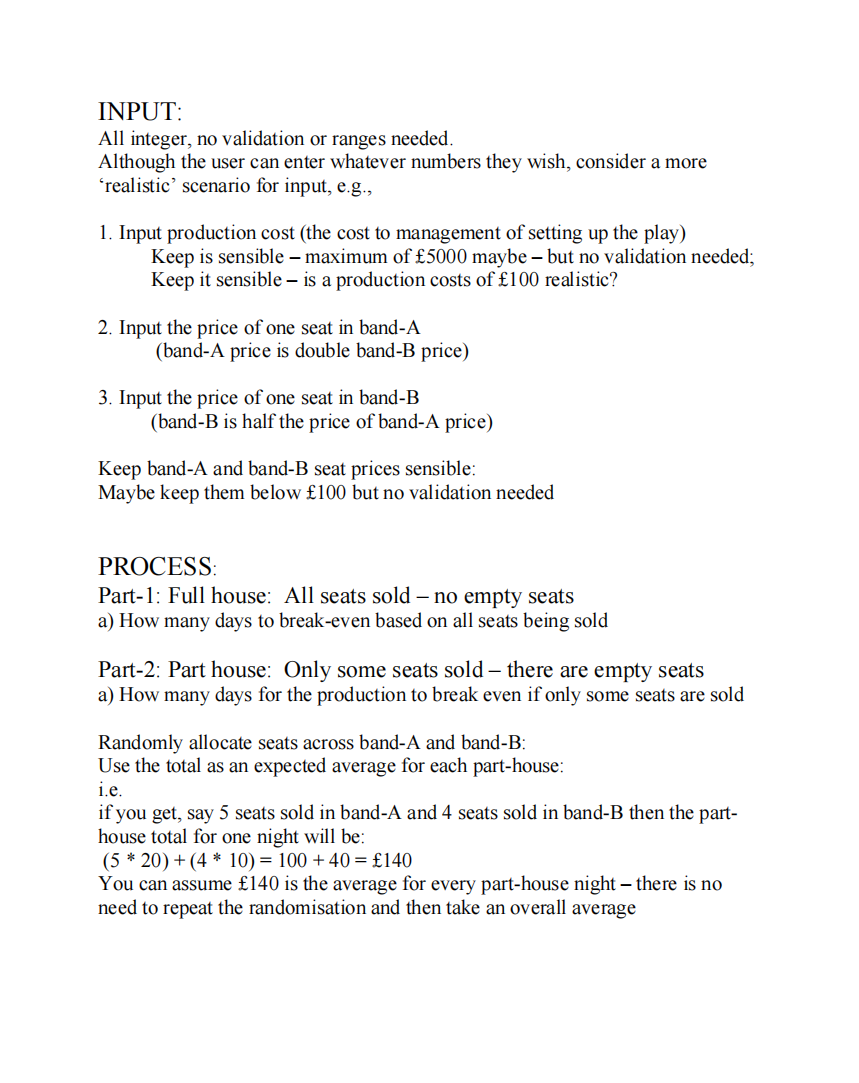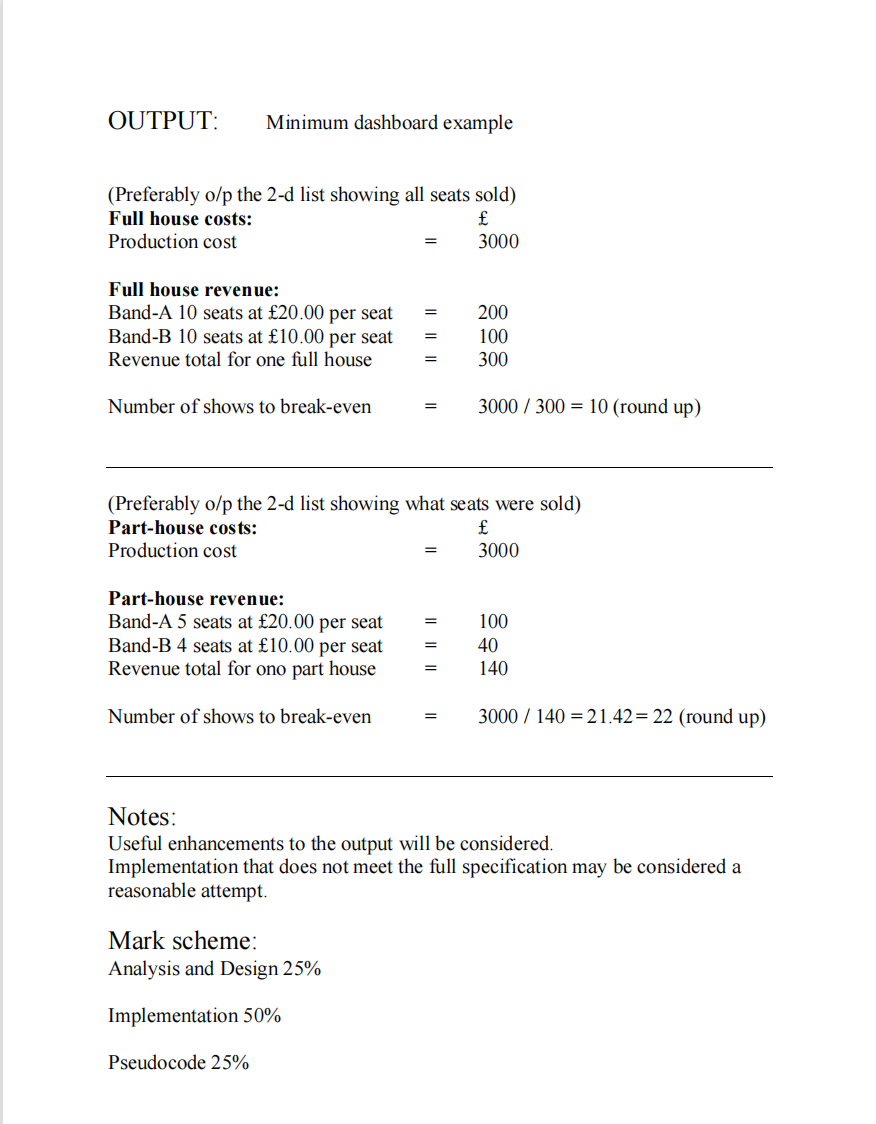Can you write it in python code
Programming Logic & Design Comprehensive
9th Edition
ISBN:9781337669405
Author:FARRELL
Publisher:FARRELL
Chapter4: Making Decisions
Section: Chapter Questions
Problem 15RQ
Related questions
Question
Can you write it in python code

Transcribed Image Text:INPUT:
All integer, no validation or ranges needed.
Although the user can enter whatever numbers they wish, consider a more
'realistic' scenario for input, e.g.,
1. Input production cost (the cost to management of setting up the play)
Keep is sensible – maximum of £5000 maybe – but no validation needed;
Keep it sensible – is a production costs of £100 realistic?
2. Input the price of one seat in band-A
(band-A price is double band-B price)
3. Input the price of one seat in band-B
(band-B is half the price of band-A price)
Keep band-A and band-B seat prices sensible:
Maybe keep them below £100 but no validation needed
PROCESS:
Part-1: Full house: All seats sold – no empty seats
a) How many days to break-even based on all seats being sold
Part-2: Part house: Only some seats sold – there are empty seats
a) How many days for the production to break even if only some seats are sold
Randomly allocate seats across band-A and band-B:
Use the total as an expected average for each part-house:
i.e.
if you get, say 5 seats sold in band-A and 4 seats sold in band-B then the part-
house total for one night will be:
(5 * 20) + (4 * 10) = 100 +40 = £140
You can assume £140 is the average for every part-house night – there is no
need to repeat the randomisation and then take an overall average

Transcribed Image Text:OUTPUT:
Minimum dashboard example
(Preferably o/p the 2-d list showing all seats sold)
Full house costs:
£
Production cost
3000
Full house revenue:
Band-A 10 seats at £20.00 per seat
Band-B 10 seats at £10.00 per seat
200
100
Revenue total for one full house
300
Number of shows to break-even
3000 / 300 = 10 (round up)
%3D
(Preferably o/p the 2-d list showing what seats were sold)
Part-house costs:
£
Production cost
3000
Part-house revenue:
Band-A 5 seats at £20.00 per seat
Band-B 4 seats at £10.00 per seat
Revenue total for ono part house
100
40
140
Number of shows to break-even
3000 / 140 = 21.42= 22 (round up)
Notes:
Useful enhancements to the output will be considered.
Implementation that does not meet the full specification may be considered a
reasonable attempt.
Mark scheme:
Analysis and Design 25%
Implementation 50%
Pseudocode 25%
Expert Solution
This question has been solved!
Explore an expertly crafted, step-by-step solution for a thorough understanding of key concepts.
Step by step
Solved in 3 steps with 1 images

Knowledge Booster
Learn more about
Need a deep-dive on the concept behind this application? Look no further. Learn more about this topic, computer-science and related others by exploring similar questions and additional content below.Recommended textbooks for you

Programming Logic & Design Comprehensive
Computer Science
ISBN:
9781337669405
Author:
FARRELL
Publisher:
Cengage

Programming Logic & Design Comprehensive
Computer Science
ISBN:
9781337669405
Author:
FARRELL
Publisher:
Cengage